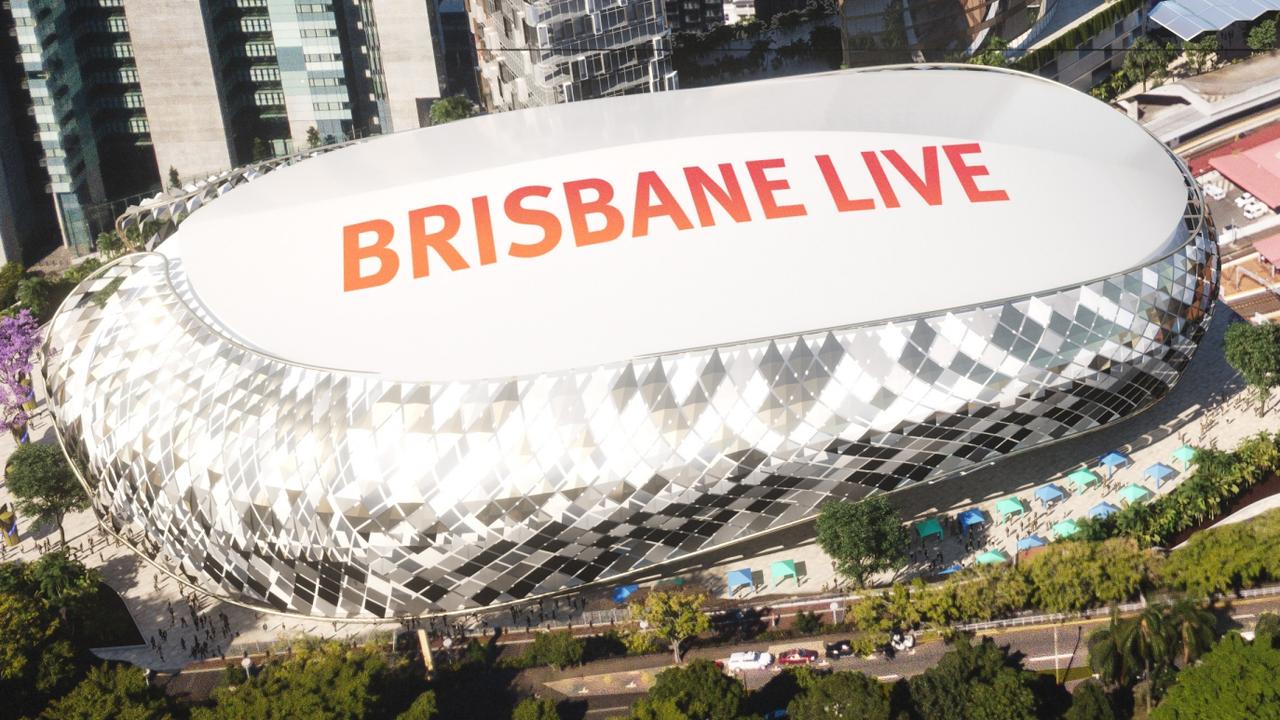Future Brisbane: Qld sporting clubs asked to consider field-side developments to help solve housing crisis
Queensland sporting clubs have been asked to consider developing homes on the fringes of their facilities as a possible solution to the housing crisis.
Future QLD
Don't miss out on the headlines from Future QLD. Followed categories will be added to My News.
Deputy Premier Steven Miles has issued a plea for Queensland clubs to consider developing homes on the fringes of sporting fields after the idea was pitched as a solution to the state’s housing crisis.
The concept was floated by The Courier-Mail as an ideal option to unlock prime land alongside community sporting venues to address the severe lack of housing supply while also delivering a vital cash injection to iconic clubs.
Property Council Queensland executive director Jen Williams said there were a number of interstate examples, particularly AFL clubs, where mixed-density homes had been built with the fields retained as both the resident’s backyard and athletic facilities.
Speaking to The Courier-Mail from a study tour with the Property Council in Melbourne, Mr Miles said he was inspired by a number of examples in the Victorian capital where sporting clubs had redeveloped to deliver new housing.

The Deputy Premier and Planning Minister said sporting and community clubs had already been invited to help identify land as a response to last year’s Housing Summit but he believed there were more options capable of being transformed.
“While a small number of sporting clubs came forward in the earlier call for interest, and those are still being investigated, we think there could be more opportunities to deliver homes and improve club facilities like we have seen here in Melbourne,” Mr Miles said.
“We are offering to any sporting club that has land they may want considered a chance to meet with a planner and discuss what might be possible.”
Mr Miles said the existing lease conditions may be an impediment to development, but he said the government could work with the Resources Department to “find ways to overcome those historic conditions where possible”.

The Deputy Premier said a prime example was Waverley Park in Melbourne’s suburbs, which was once a major AFL ground with capacity for 72,000 fans.
But after it fell into disrepair after being abandoned as a league venue in 2000, it was redeveloped to build about 50 double-storey, four-bedroom townhouse-style homes directly surrounding the field while another 3500 people now live in what was the extensive carpark.
The field remains as well as the adjacent facilities where the historic AFL club Hawthorn Hawks are based.
There are similar examples in Perth where the Claremont football club now has housing for 750 homes and the former AFL stadium in Adelaide, Football Park, which now has mixed-use development with 1600 new homes through townhouses and apartments.

Ms Williams said the development of the Tarragindi Bowls Club was another “great example”, where a fledgling sporting group had been revitalised due to the development of a retirement community surrounding the facility.
“There’s a whole heap of sporting communities around Brisbane that are in financial strife and sit on a lot of land,” she said.
“That community then gets to use the sporting field as their backyard and because the community is driving it and involved in it, things like density become less of an issue because they see the benefit returned back to them.”
More Coverage
Read related topics:Future Brisbane





